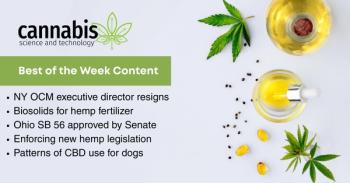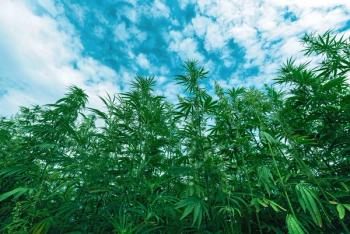
Why Cannabis Needs Its Own Set of Safety Standards
An overview of the changes needed to increase standards and regulations in the cannabis industry and why they are so important.
Every new state that legalizes cannabis in some form defaults to adopting the same standards, technologies, and processes that are used to guarantee food safety.
It’s wrongheaded. And sooner or later, it’s going to make people sick.
At the risk of sounding simplistic, food safety standards were designed to ensure food safety. And for the most part, they work reasonably well for the food industry. There is the occasional recall of a food contaminated with E. coli or Salmonella, and in the vast majority of cases, the source is quickly traced, identified and either destroyed or remediated. But compared to the vast amounts of food placed into the marketplace disease free, these incidents, while unfortunate, are relatively—and thankfully—rare.
But those same standards will not work for the cannabis industry, for several reasons:
- Cannabis pathogens and food pathogens are different. In addition to the pathogens they both share, cannabis also has pathogens that are cannabis specific.
- Since cannabis and food pathogens are not all the same, different pathogen detection methods must be used.
- Cannabis ingestion methods vary, with important implications.
Let’s look at each of these in turn.
Different Pathogens and Contaminants
There are many bacterial and fungal contaminants both industries are trying to detect, such as Salmonella species, shiga toxin producing E. coli, and the fungal produced mycotoxins, for example, aflatoxins and ochratoxins. But there are other contaminants food safety standards ignore, or don’t test for at all, that are unhealthy and sometimes downright lethal for a cannabis user. For example, because it’s inhaled, cannabis is also tested for four pathogenic Aspergillus species (A. flavus, A. fumigatus, A. niger, and A. terreus), whose spores cause lung infections. The recent problem with vaping products underlines this point. Vitamin E acetate extract is harmless in food. But when incinerated and inhaled it can be deadly.
Pesticides are used routinely on fruits and vegetables that are still present at consumption. A 2019
The Same Pathogen Detection Methods Can’t Be Used
The food industry’s primary detection method is spreading aqueous aliquots of microbial suspensions onto solid surfaces (known as the plating method) to detect microbes such as molds or yeasts. But this method is neither sensitive enough nor specific enough for the cannabis industry. And yet in the face of federal prohibition and therefore no country-wide standards, many states, especially those that are newly legal or decriminalized, adopt the same food industry methods, with unsurprisingly sub-optimum results. This not only costs growers money and time when they have to remediate or destroy a crop for problems the plating systems didn’t catch, it’s also dangerous. For example, some of the most toxic Aspergillus species don’t grow on plates and can’t be effectively detected by that method. They can only be detected, alive or dead, through genetic testing, such as quantitative polymerase chain reaction (qPCR). And even some of those products are not entirely accurate due to false positive and false negative results.
Different Methods of Routes of Administration
Food is only consumed one way: by mouth. As such it’s subjected to all the processes of digestion—a system with powerful chemicals and organs designed to break down food, extract its nutrients, and fight off any non-lethal pathogens that might have been ingested. But cannabis is consumed through the lungs and directly into the bloodstream, as well as the digestive system. Certain delivery methods, like vaping, require a cannabis flower extraction process that actually enriches the toxicity of harmful chemicals or pathogens, while also presenting the opportunity to add other harmful chemicals, such as vitamin E acetate extract, a thinning agent.
Standardization Is the Only Way to Make Cannabis Safe(ly)
For these reasons, the overwhelming majority of cannabis companies in all different aspects of the business would welcome a much more comprehensive and standardized level of regulation. We have methods and technology to ensure the cannabis supply is safe, clean, economical, and consistent. All we need are the financial and regulatory incentives to use them.
Cannabis isn’t going away. In fact, it’s only becoming more available and more valuable every day. But unfortunately, the illegal market is just as robust, and more dangerous than ever. Without standardization of regulation to ensure product safety, the legal cannabis market has no way to compete with the illegal market. But even that development, as significant as it would be, isn’t a cure-all.
We also need financing options that would allow us access to financial services afforded to every other legal business in this country, incentives to allow us to invest in better equipment, interstate commerce to underwrite growth and share safety information, and a real research pipeline dedicated to producing innovations for both medicine and health.
The good news is, we can solve these problems and others, and doing so will produce benefits for the industry, consumers, and every legal jurisdiction. But without resolution, the cannabis industry will continue to exist in a state of limbo that isn’t good for anyone.
Reference
About the Author
Dr. Sherman is the Director of Regulatory Affairs for Medicinal Genomics, Inc. Prior to joining MGC, Dr. Hom was a Research Scientist 1 in New Jersey’s Division of Public Health and Environmental Laboratories (PHEL), where, as a Project Manager, he coordinated all PHEL’s pre-analytical activities supporting its SARS-CoV-2 testing. Prior to that, he was the Project Manager for starting the state’s Cannabis Testing Lab and subsequently for validating Microbial Testing of Cannabis products. He has also been a professor of microbiology, a laboratory manager, a senior research scientist, a writer, and an inventor. He was a Postdoctoral Fellow in Molecular Genetics at The Johns Hopkins University, holds a PhD in Microbiology from the University of California at Davis, and a BA in Biology from UC San Diego.
Newsletter
Unlock the latest breakthroughs in cannabis science—subscribe now to get expert insights, research, and industry updates delivered to your inbox.





